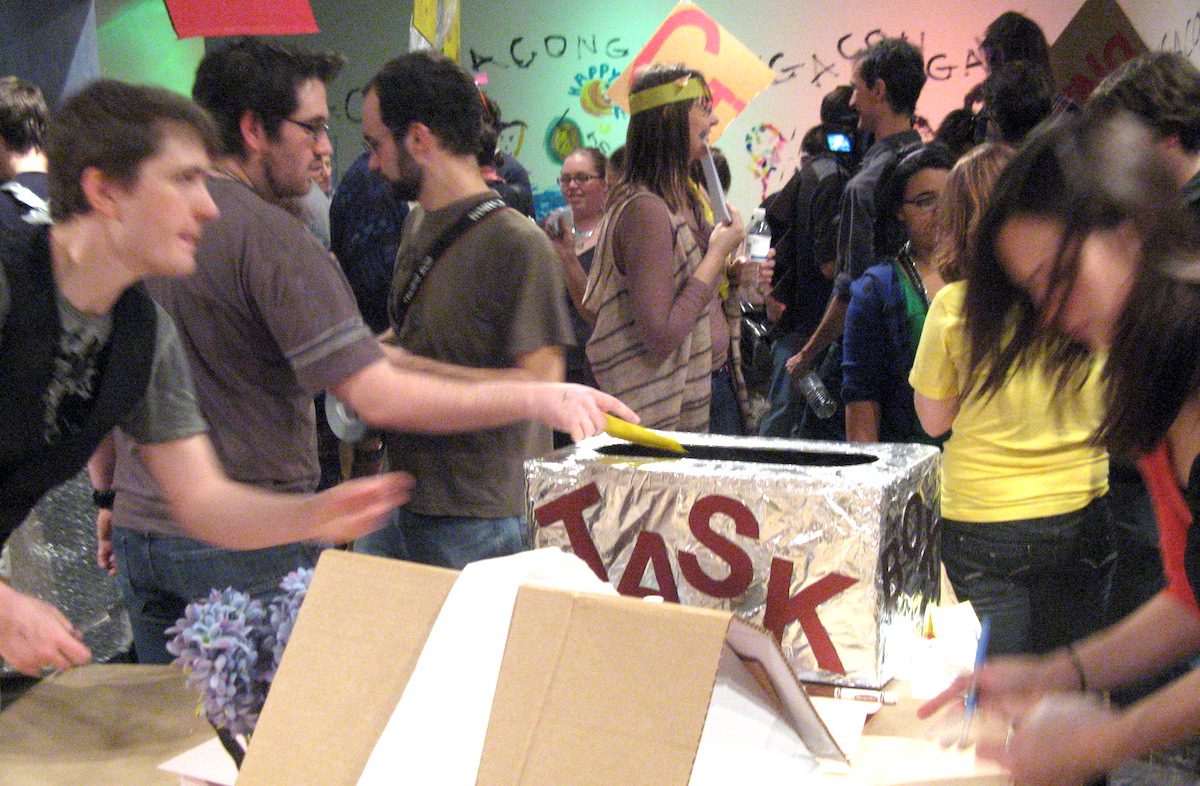If you are looking for a new way to engage students at the beginning of the year that will get them talking to each other, experimenting with materials, and having fun, consider throwing a Back-to-School TASK Party!
Oliver Herring is an experimental artist living in New York City. He is well known for his improvisational events, known as TASK. TASK Events are open-ended, allowing for interaction with other participants and their environment. While there are a few different versions of how a TASK can be structured, they all share the same basic components:
- A designated area.
- A variety of props and materials.
- Active participants who both write and perform tasks.
While this open-ended structure can be somewhat chaotic, it also provides your students with unlimited opportunities to be creative. Each student will write down a task on a piece of paper. The tasks will then be collected in a pool for others to pull from. It is up to the individual student to interpret each task.
Potential tasks:
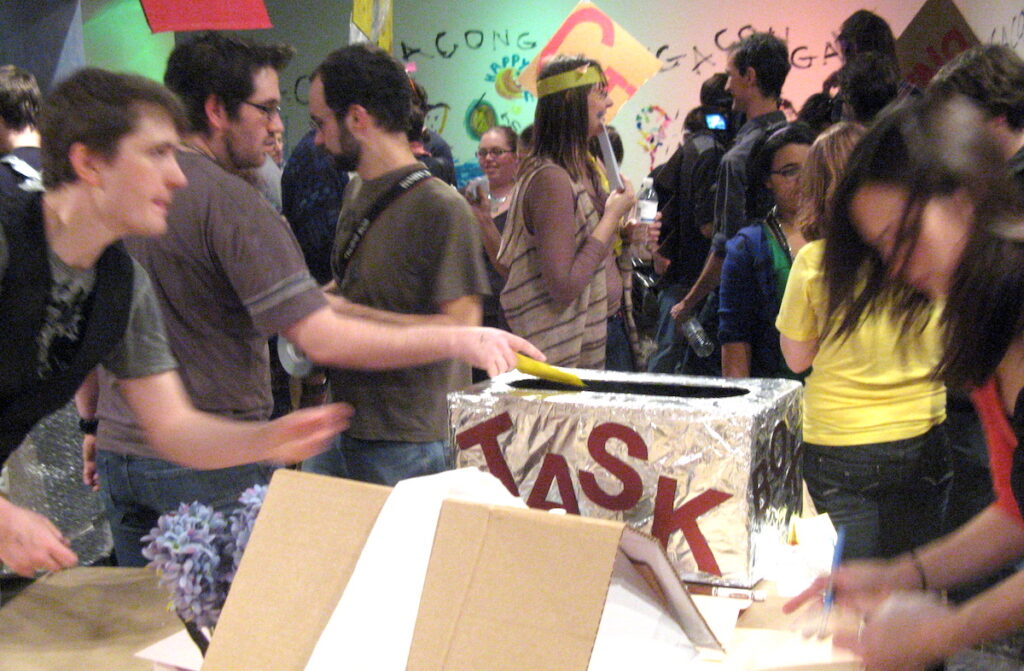
- Make a hat and wear it.
- Create a silly mask and walk around the class to make someone smile.
- Design an outfit for the year 3019.
- Build a new invention and act out a commercial for it.
- Draw how you feel about your first day of school.
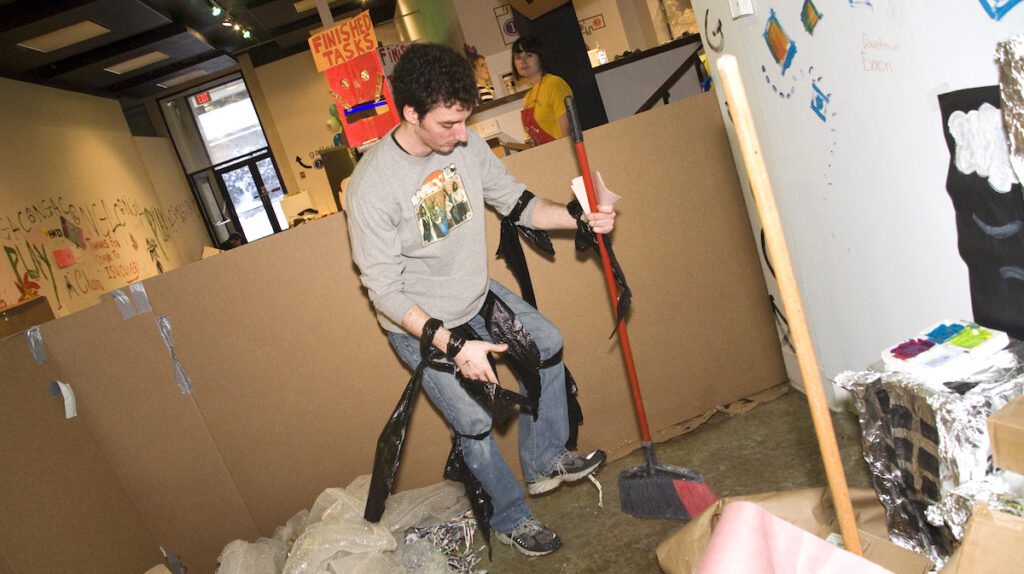
There are endless possibilities of what your students can write, create, perform, and experience during a TASK party. When students finish a task, they will need to write a new task before pulling another to complete themselves.
A TASK party can be a great opportunity to encourage collaboration and creative thinking. Try not to give too many specific examples to your students, so each class can develop their own unique experience. As students work through each task, they’re naturally going to play and get noisy with excitement. But while this seemingly out-of-control event is happening, students are also problem-solving and working together.
Resist interfering in the students’ interpretations. You may find the majority of tasks result in creating a tangible artwork. Eventually, however, a group of students may interpret a task like, “Make cell phones,” as creating their own cell phone commercial. You may want to direct more students to think this way. While it’s great to encourage your students to think outside the box, remember it is important to allow for their own personal interpretations of each task.
TASK parties could also help promote group accountability and reward positive behaviors. If you have class goals and rewards for students to work toward throughout the year, a TASK party may be something to add to your students’ choices. By introducing the concept at the beginning of the school year, students can get excited and anticipate another TASK experience if they reach their goal.
Here’s how you may get started:
Gather and organize materials.
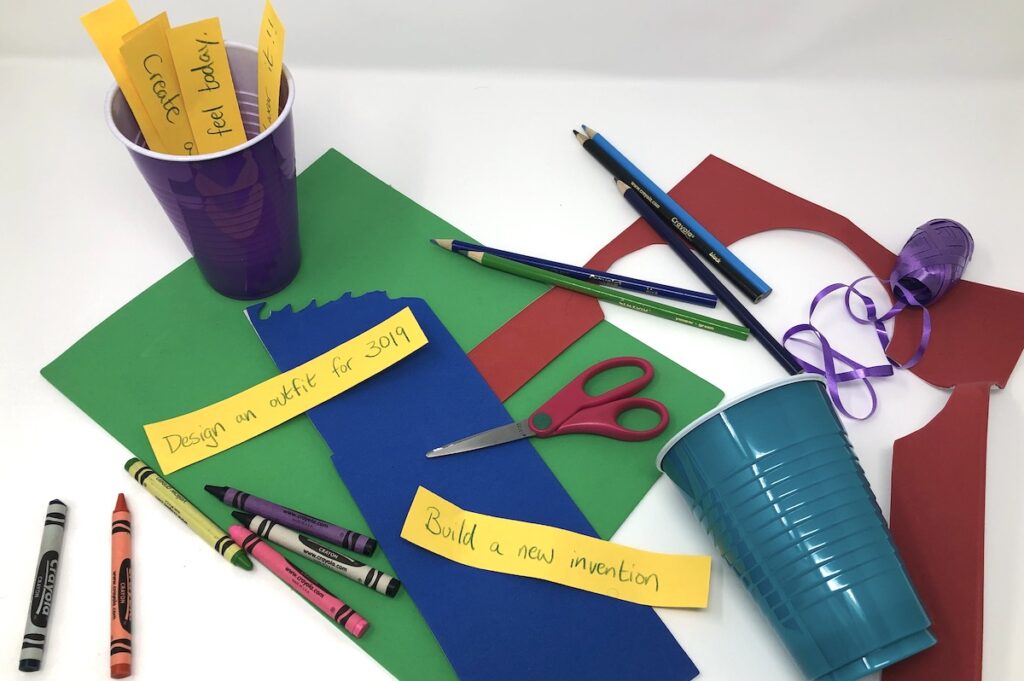
Assemble a great variety of materials and organize them into boxes, bins, or containers. If you already organize your classroom with choice-based centers, this step might be a breeze! If students are new to your classroom or your school, this can be an excellent opportunity to showcase the kinds of materials they will use to create with all year long. If you don’t typically have all of your materials out at once, this may take some organizing. Look around in your classroom cabinets or in places at home that may provide perfect task materials. If you’ve been hoarding a few miscellaneous items, now is your chance to let them shine!
Design a user-friendly task area.
Prepare and cut strips of paper for students to write their tasks on. Be sure to have a station of pens or markers near the task pool container. Think of an eye-catching way to designate the task pool. A brightly-colored pail, a box decorated with streamers, or a neon basket, could be fun ways to engage students in writing tasks for the TASK party.
Prepare effective work areas.
Create a space in your classroom where materials are visible, organized, and ready for use. Keep in mind, with all of the unforeseen tasks, this neat and tidy organization won’t last long. That’s okay! The first days of school are always a bit chaotic. Prepare yourself to let your students get a little loud, a little messy, but most of all, creative with this fun activity.
The day of the TASK party…
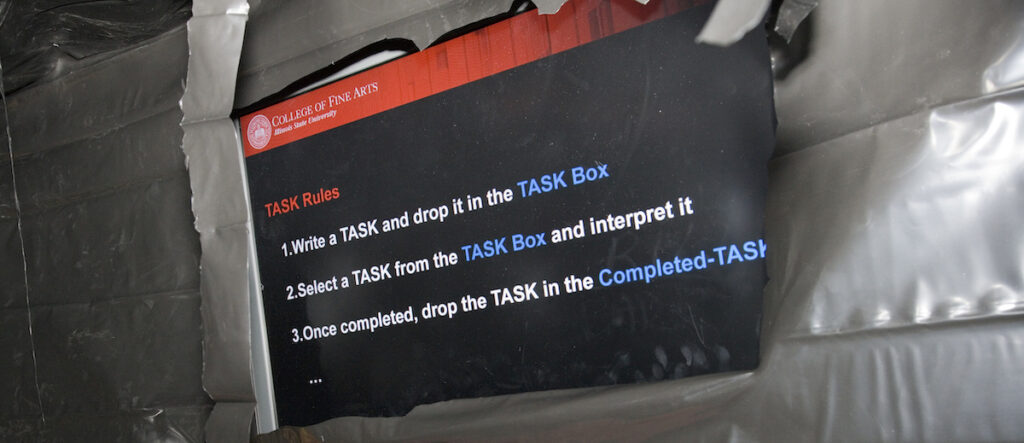
As students enter your classroom, they may be confused, excited, and ready to find out what the heck they’ll be jumping into! In many of their other classes, students will be experiencing expectations, rules, and procedures. These certainly are important, but why not hold off a day or two and start the school year creating and experimenting with materials first? Give your students a break from the routine and switch their brain into some creative thinking and making with TASK.
However, starting a TASK party will require some facilitating and explanation. Give students a brief introduction to what TASK is, and how it was created by contemporary artist, Oliver Herring. You may provide a few examples of what a task could be from his website, but encourage students to come up with new tasks rather than reiterations of the examples.
Ask each student to write down their task and place it in the designated task pool container. Clearly explain that each student may pull a task from the container and interpret what is written to complete the task. Once the task is completed, students should write a new task and place it in the container before pulling a second task to complete.
Explain to your students that a TASK party is all about the experience. The creations are not as important as the time and process they will share with their classmates. You can choose how you want to handle what they have created once the TASK party is over. You may decide to allow students to take home what they’ve created as a souvenir of their first day of art class. You could also curate a few of the pieces along with photographs of the event for a school display.
Be bold! Dive in!
You may be thinking this is a wild idea for the first day of school, but when is a better time? You have all the materials and energy you need to inspire a great burst of creativity to kick off the school year! Have some fun with your students and help them get excited about all the fun and engaging projects you have planned throughout the year!
Have you ever participated in a TASK party?
What creative task would you add to the TASK pool?
Magazine articles and podcasts are opinions of professional education contributors and do not necessarily represent the position of the Art of Education University (AOEU) or its academic offerings. Contributors use terms in the way they are most often talked about in the scope of their educational experiences.
